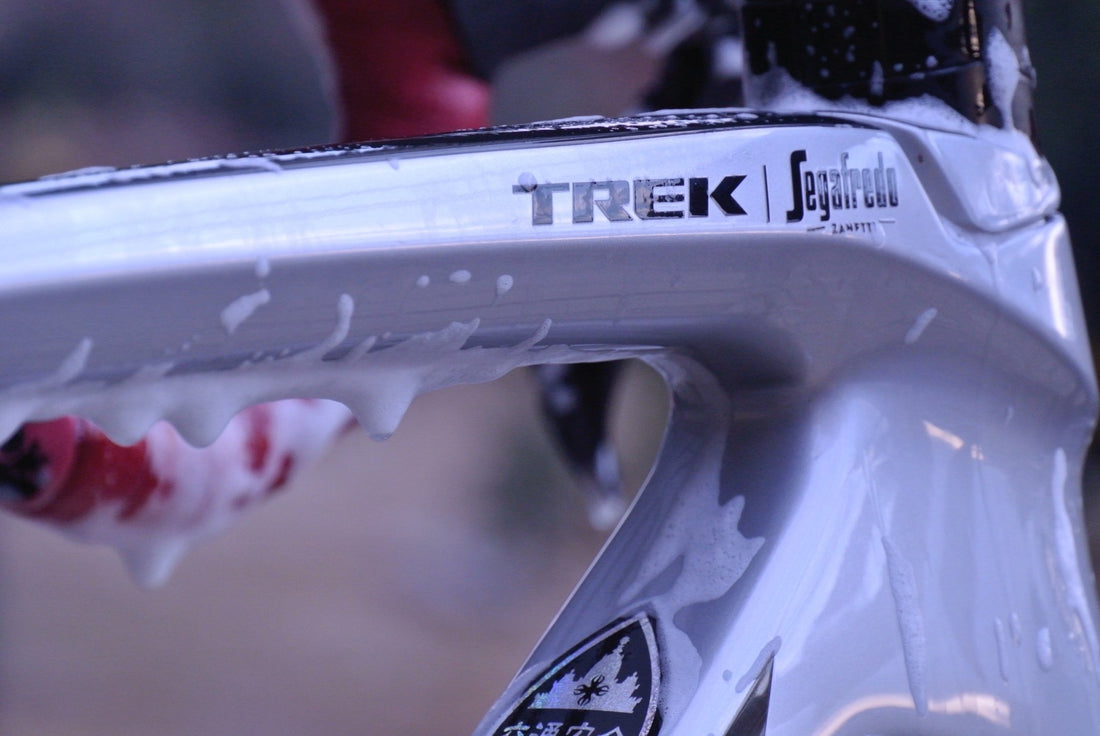Introduction to Frame Protection
Cycling enthusiasts are no strangers to the challenges that come with maintaining their road bikes. One of the essential aspects of bike maintenance is frame protection. This article delves into the science behind road bike frame protection, exploring its importance, types, material considerations, and how to choose the best option for your bike.
Why is Frame Protection Essential?
Preventing Damage and Wear
Road bikes are exposed to various elements that can cause damage, such as debris, rocks, and even the bike chain. Frame protection helps preserve your bike's integrity by shielding it from these potential hazards. This protection minimizes the risk of chips, scratches, and other forms of wear and tear that can compromise your bike's performance.
Maintaining Aesthetic Appeal
A well-maintained bike is not only about performance but also appearance. Frame protection keeps your bike looking sharp by preventing unsightly marks and scratches that may result from regular use or accidental impacts.
Enhancing Bike Resale Value
If you plan to sell your bike in the future, having frame protection in place can help maintain its resale value. A bike in good condition, free of noticeable damage, is more appealing to potential buyers and can fetch a higher price.
Types of Frame Protection
Clear Bike Frame Protection
Clear bike frame protection is a popular choice among cyclists due to its nearly invisible appearance. This type of protection consists of a transparent adhesive film that adheres to your bike's frame, providing a barrier against scratches and other damage.
Bike Frame Protection Kits
Bike frame protection kits are comprehensive solutions that include various pieces designed to protect specific parts of your bike, such as the chainstay, downtube, and other high-wear areas. These kits often come with precut pieces that are easy to apply and tailored to fit your bike's make and model.
Chainstay Protectors
The chainstay is prone to damage from chain slaps and debris, making it a critical area to protect. Chainstay protectors are typically made from materials like neoprene or rubber and wrap around the chainstay to provide a buffer against potential damage.

Downtube Protectors
Downtube protectors shield the downtube from impacts and flying debris encountered during rides. They are commonly made from materials such as rubber, neoprene, or adhesive film and can be easily applied to the downtube to prevent chips and scratches.
Material Considerations
PVC
Polyvinyl chloride (PVC) is a popular material for frame protection due to its durability and flexibility. PVC film is often used in clear bike frame protection, as it provides excellent resistance to scratches and impacts without obscuring your bike's aesthetics.
Rubber
Rubber is another widely used material for bike frame protection. Its elasticity and shock-absorption properties make it an excellent choice for protecting high-impact areas like the chainstay and downtube. Rubber protectors can be either adhesive or wrap-around, depending on the product.
Neoprene
Neoprene is a synthetic rubber known for its flexibility, durability, and water resistance. It is often used for chainstay protectors and other bike protection products that require a snug fit and effective shock absorption.
How to Choose the Right Frame Protection
Determine Your Needs
Before purchasing frame protection, assess which parts of your bike are most susceptible to damage. For instance, if your chainstay is prone to chain slap, invest in a quality chainstay protector. If you want comprehensive coverage, consider a bike frame protection kit.
Assess Material Options
Examine the materials used in various frame protection products and weigh their pros and cons. PVC, rubber, and neoprene each offer unique benefits, so choose the material that best suits your bike and riding conditions.
Examine Product Reviews
Research online reviews from fellow cyclists to get a sense of the effectiveness and ease of installation for various frame protection products. This can help you make a more informed decision when selecting the right protection for your bike.
Installation Tips
Proper installation is crucial to ensure your frame protection works effectively. Clean your bike's frame thoroughly and make sure it's dry before applying any adhesive protectors. Follow the manufacturer's instructions carefully, and don't hesitate to ask for help if you're unsure about any steps.
Maintaining Your Frame Protection
Regularly inspect your frame protection to ensure it's still in good condition and hasn't become damaged or dislodged. Replace any worn or damaged protectors as needed to maintain optimal protection for your bike's frame.
Conclusion
Road bike frame protection is an essential investment for cyclists who want to preserve their bike's performance, appearance, and resale value. By understanding the various types of frame protection available, considering the materials used, and following proper installation and maintenance procedures, you can keep your bike in top-notch condition for years to come.
FAQs
Q1: Can I install frame protection on a carbon frame bike?
A: Yes, frame protection is suitable for carbon frame bikes. Just ensure you choose a product specifically designed for carbon frames to avoid any issues.
Q2: Is frame protection easy to remove?
A: Most adhesive frame protection products are designed to be easily removable without leaving residue or damaging the paint. However, it's best to follow the manufacturer's instructions for removal to avoid any potential damage.
Q3: How often should I replace my frame protection?
A: The lifespan of your frame protection depends on the material, riding conditions, and how well it's maintained. Regularly inspect the protection and replace it when signs of wear or damage appear.
Q4: Can I use multiple types of frame protection on my bike?
A: Yes, you can combine different types of frame protection to provide comprehensive coverage for your bike. For example, you might use clear bike frame protection on the main frame and a neoprene chainstay protector.
Q5: Are there any downsides to using frame protection?**
A: There are a few downsides to using frame protection, but some possible concerns include added weight and potential difficulty in removing adhesive protectors. However, the benefits of protecting your bike's frame from damage typically outweigh these minor concerns.
Q6: How can I clean and maintain my bike's frame protection?
A: Cleaning and maintaining your frame protection involves regularly inspecting it for wear or damage and keeping it free of dirt and debris. You can use a mild soap and water solution to clean adhesive protectors, while neoprene or rubber protectors can be wiped down with a damp cloth. Always follow the manufacturer's recommendations for cleaning and maintenance.
Q7: Will frame protection affect my bike's performance?
A: Frame protection is designed to have minimal impact on your bike's performance. In fact, by preventing damage to your bike's frame, it can help maintain optimal performance over time. The added weight from frame protection is usually negligible and should not significantly affect your ride.
Q8: Can I customise frame protection to match my bike's design?
A: Yes, some manufacturers offer custom frame protection options that allow you to match your bike's colour or design. Additionally, clear bike frame protection is an excellent choice for those who want to maintain their bike's original appearance while still providing protection.
Q9: Is frame protection necessary for all types of riding?
A: While the level of frame protection required may vary depending on your riding style and conditions, it's generally a good idea for all cyclists to invest in some form of frame protection. Road bikes are particularly susceptible to damage from debris and impacts, so even casual riders can benefit from protecting their bike's frame.
Q10: How do I know if my frame protection is still effective?
A: Inspect your frame protection regularly for signs of wear, damage, or detachment. If you notice any of these issues, it's time to replace the affected protector to ensure your bike's frame remains well-protected.





